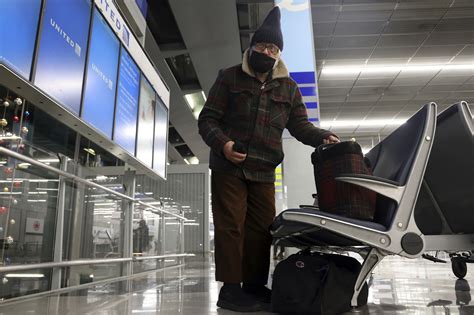
A Los Angeles condo owner’s installation of metal bars outside his building to deter homeless individuals from sheltering on the property has ignited public outrage and fueled a heated debate over the ethics and effectiveness of such measures.
The device, comprised of multiple curved metal bars affixed to the exterior of the building, is intended to prevent people from lying down or sleeping in the alcove. While the condo owner, identified as only Shawn in reports, defends the installation as a necessary step to protect his property and maintain cleanliness, critics argue that it is a cruel and inhumane solution that further marginalizes an already vulnerable population. The controversy underscores the growing tension between residents and the unhoused community in Los Angeles, where a severe housing crisis has led to a visible increase in homelessness.
The installation of the metal bars has triggered a wave of condemnation from local activists, advocacy groups, and concerned citizens. Social media platforms have been flooded with comments criticizing the device as “anti-homeless architecture” and a “hostile design.” Critics argue that the bars do not address the root causes of homelessness, such as poverty, mental illness, and lack of affordable housing, but instead simply displace individuals to other areas.
“All it does is push the problem to another street,” said one local resident who preferred to remain anonymous, adding that it’s a “Band-Aid solution to a systemic issue.”
Shawn, the condo owner behind the installation, maintains that he was motivated by concerns about safety and hygiene. He claims that the area outside his building had become a gathering place for homeless individuals, leading to issues such as littering, public urination, and occasional confrontations.
“I tried to be compassionate. I tried to be understanding,” Shawn told local news outlets. “But at the end of the day, I have a responsibility to protect my property and ensure the safety and well-being of my tenants.”
He stated that he had contacted city officials and law enforcement agencies multiple times to address the situation but felt that their response was inadequate. According to Shawn, the metal bars were a last resort to deter homeless individuals from occupying the space outside his building.
The controversy surrounding the anti-homeless device highlights the complex challenges faced by cities grappling with homelessness. While residents have a right to protect their property and maintain a safe living environment, there is growing recognition that addressing homelessness requires comprehensive solutions that go beyond simply displacing individuals.
Advocates for the homeless are calling for increased investment in affordable housing, mental health services, and job training programs. They argue that these measures are essential to addressing the root causes of homelessness and providing individuals with the support they need to rebuild their lives.
“We need to focus on providing people with housing and services, not pushing them from one place to another,” said a representative from a local homeless advocacy group. “These types of devices are not only inhumane but also ineffective in the long run.”
The Los Angeles City Council is currently considering a number of proposals aimed at addressing the homelessness crisis. These proposals include expanding the availability of temporary shelters, increasing funding for supportive housing programs, and streamlining the process for building affordable housing.
However, these efforts face significant challenges, including a shortage of funding, community opposition to new housing developments, and a lack of coordination among various government agencies and non-profit organizations.
The debate over the anti-homeless device underscores the urgent need for a comprehensive and compassionate approach to addressing homelessness in Los Angeles and other cities across the country. While there is no easy solution to this complex problem, it is clear that simply pushing individuals from one place to another is not a sustainable or ethical response. A long-term solution requires providing individuals with the resources and support they need to escape homelessness and rebuild their lives. The incident also raises questions about the role of urban design in shaping social interactions and the potential for architecture to either include or exclude vulnerable populations. The ethical implications of using design to deter people in need spark crucial conversations about compassion, social responsibility, and the need for comprehensive solutions.
The controversy has also drawn attention to the broader issue of “hostile architecture,” which refers to design strategies that are intended to deter unwanted activities in public spaces. Examples of hostile architecture include benches with dividers that prevent people from lying down, spikes on ledges to deter skateboarding, and loud noises to discourage loitering.
Critics of hostile architecture argue that it is a form of social control that disproportionately affects homeless individuals, young people, and other marginalized groups. They contend that these design strategies create a more exclusionary and unwelcoming environment in public spaces.
Proponents of hostile architecture, on the other hand, argue that it is a necessary tool for maintaining order and preventing crime. They claim that these design strategies can help to protect property, reduce vandalism, and improve the overall quality of life for residents.
The debate over hostile architecture is part of a larger discussion about the role of design in shaping social interactions and the potential for architecture to either include or exclude vulnerable populations. As cities grapple with issues such as homelessness and social inequality, it is important to consider the ethical implications of design choices and to strive for solutions that are both effective and compassionate.
In the wake of the controversy, some architects and designers are exploring alternative approaches to urban design that are more inclusive and welcoming. These approaches emphasize the creation of public spaces that are accessible to all members of the community, regardless of their socioeconomic status or housing situation.
Examples of inclusive design strategies include providing comfortable seating options, creating well-lit and safe environments, and incorporating features that promote social interaction. By prioritizing the needs of all users, these design strategies can help to create more equitable and vibrant public spaces.
The incident involving the anti-homeless device in Los Angeles serves as a reminder of the urgent need for creative and compassionate solutions to address homelessness. While there is no easy answer to this complex problem, it is clear that a multi-faceted approach that combines affordable housing, mental health services, job training programs, and inclusive urban design is essential to creating a more just and equitable society. The use of “anti-homeless” devices like the metal bars in this case study often elicits strong reactions due to their perceived dehumanization of individuals experiencing homelessness. Such devices are often seen as a symbol of societal neglect and a failure to address the root causes of homelessness.
The long-term impacts of such measures are also a concern. While they may temporarily displace homeless individuals from a particular location, they do not solve the underlying issues that lead to homelessness. Instead, they may simply push the problem to other areas, creating a cycle of displacement and marginalization. Furthermore, the use of anti-homeless devices can create a sense of animosity and division between housed and unhoused communities, hindering efforts to build trust and find collaborative solutions.
Many urban planners and social justice advocates argue for a “housing first” approach to homelessness, which prioritizes providing individuals with stable housing as a foundation for addressing other challenges, such as mental health issues or substance abuse. This approach recognizes that it is difficult for individuals to improve their lives without a safe and stable place to live.
In addition to housing, access to supportive services, such as mental health care, substance abuse treatment, and job training, is crucial for helping individuals overcome homelessness and achieve self-sufficiency. These services can help individuals address the underlying issues that contribute to their homelessness and develop the skills and resources they need to maintain stable housing.
Ultimately, addressing homelessness requires a comprehensive and collaborative effort involving government agencies, non-profit organizations, the private sector, and the community as a whole. By working together, these stakeholders can develop and implement solutions that are both effective and compassionate.
The situation in Los Angeles underscores the broader national crisis of housing affordability and the growing gap between the rich and the poor. As housing costs continue to rise, more and more people are at risk of becoming homeless. This is particularly true in cities like Los Angeles, where the cost of living is high and the supply of affordable housing is limited.
Addressing the housing affordability crisis requires a range of policy interventions, including increasing the supply of affordable housing, strengthening tenant protections, and providing rental assistance to low-income households. It also requires addressing the root causes of poverty and inequality, such as low wages, lack of access to education and job training, and discrimination.
The debate surrounding the anti-homeless device also highlights the importance of empathy and understanding in addressing homelessness. It is easy to view homeless individuals as a problem to be solved or a nuisance to be removed. However, it is important to remember that these are individuals who are struggling with difficult circumstances and deserve our compassion and respect.
By taking the time to understand the challenges faced by homeless individuals and by treating them with dignity and respect, we can create a more welcoming and inclusive community for all. This includes supporting policies and programs that address the root causes of homelessness and provide individuals with the resources and support they need to rebuild their lives.
The incident also serves as a reminder of the power of public discourse in shaping attitudes and policies toward homelessness. By speaking out against inhumane and ineffective measures, such as anti-homeless devices, and by advocating for compassionate and comprehensive solutions, we can help to create a more just and equitable society for all.
It is crucial to engage in constructive dialogue with policymakers, community leaders, and other stakeholders to raise awareness about the issue of homelessness and to advocate for policies and programs that address the root causes of this complex problem. This includes sharing personal stories, conducting research, and participating in public forums to educate others and to promote understanding and empathy.
Ultimately, addressing homelessness requires a collective commitment to creating a society where everyone has the opportunity to live with dignity and respect. This requires not only addressing the immediate needs of homeless individuals but also addressing the underlying social and economic factors that contribute to homelessness.
The LA condo owner’s anti-homeless device has sparked a necessary, albeit uncomfortable, conversation about how we treat our most vulnerable populations and the ethical implications of our actions. It is a conversation that we must continue to have until we find solutions that are both effective and compassionate. The controversy also highlights the legal and ethical gray areas surrounding the use of private property to address public problems. While property owners have a right to protect their investments, that right must be balanced against the basic human rights of individuals experiencing homelessness.
Furthermore, the incident raises questions about the role of local governments in addressing homelessness. While cities like Los Angeles have made efforts to expand shelter capacity and provide supportive services, these efforts have often fallen short of meeting the growing need. This highlights the need for increased investment in affordable housing and supportive services, as well as for more effective coordination among government agencies and non-profit organizations.
The public reaction to the anti-homeless device demonstrates a growing awareness of the issue of homelessness and a desire for more compassionate and effective solutions. This provides an opportunity for policymakers, community leaders, and advocates to work together to develop and implement policies and programs that address the root causes of homelessness and provide individuals with the resources and support they need to rebuild their lives.
The incident also serves as a reminder of the importance of civic engagement and advocacy in addressing social problems. By speaking out against injustice and by advocating for policies and programs that promote social justice, we can help to create a more equitable and compassionate society for all. The debate sparked by the metal bars emphasizes the need for a multi-faceted approach that considers the perspectives of all stakeholders, including residents, business owners, and homeless individuals. Finding common ground and developing solutions that address the needs of all members of the community is essential for creating a more inclusive and equitable society.
The use of metal bars to deter homelessness is not only ethically questionable but also potentially counterproductive. It can create a sense of animosity and distrust between housed and unhoused communities, hindering efforts to build relationships and find collaborative solutions. A more effective approach involves engaging with homeless individuals, understanding their needs, and connecting them with resources and support services.
The incident also underscores the importance of addressing the stigma associated with homelessness. Homeless individuals are often stigmatized and marginalized, which can make it difficult for them to access housing, employment, and other opportunities. By challenging these stigmas and promoting understanding and empathy, we can create a more welcoming and inclusive community for all.
The controversy serves as a microcosm of the broader challenges facing cities across the country in addressing homelessness. It highlights the need for innovative and evidence-based solutions that address the root causes of homelessness and provide individuals with the resources and support they need to escape homelessness and rebuild their lives. This includes investing in affordable housing, expanding access to mental health and substance abuse treatment, providing job training and employment opportunities, and strengthening social safety nets.
The incident also raises questions about the role of technology in addressing homelessness. While technology can be used to track and monitor homeless populations, it can also be used to connect homeless individuals with resources and support services. For example, mobile apps can be used to locate nearby shelters, food banks, and other services. Technology can also be used to facilitate communication and coordination among service providers.
The use of anti-homeless devices like the metal bars can be seen as a symbol of societal apathy and a lack of compassion for those who are struggling. It sends a message that homeless individuals are not valued or respected and that their needs are not important. A more humane approach involves treating homeless individuals with dignity and respect and providing them with the resources and support they need to rebuild their lives.
The incident also highlights the importance of addressing the systemic factors that contribute to homelessness, such as poverty, inequality, and discrimination. These factors can create barriers to housing, employment, and other opportunities, making it difficult for individuals to escape homelessness. By addressing these systemic factors, we can create a more equitable and just society for all.
The debate sparked by the metal bars serves as a call to action for individuals, communities, and governments to work together to address the crisis of homelessness. It is a reminder that we all have a role to play in creating a society where everyone has the opportunity to live with dignity and respect.
The LA condo owner’s actions represent a tangible example of a growing trend of privatized solutions to public problems. As public resources and support systems dwindle, individuals and communities are increasingly left to their own devices to address issues like homelessness. This can lead to fragmented and inequitable responses that fail to address the root causes of the problem and may even exacerbate the situation.
The incident underscores the importance of public investment in social safety nets and community-based services. When individuals have access to affordable housing, healthcare, and other essential resources, they are less likely to become homeless. By investing in these services, we can prevent homelessness before it occurs and provide individuals with the support they need to maintain stable housing.
The public outcry against the anti-homeless device demonstrates a growing recognition of the need for more compassionate and effective solutions to homelessness. This provides an opportunity for advocates and policymakers to work together to advance policies and programs that prioritize the needs of homeless individuals and promote social justice.
The controversy highlights the importance of ethical considerations in urban planning and design. Architects and planners have a responsibility to create spaces that are inclusive and welcoming for all members of the community, regardless of their socioeconomic status or housing situation. This requires considering the needs of vulnerable populations and avoiding design choices that may exclude or marginalize them.
The incident serves as a reminder that homelessness is not simply a problem of individual failing but a complex social issue that requires a comprehensive and systemic response. By addressing the root causes of homelessness and providing individuals with the resources and support they need, we can create a more just and equitable society for all. The situation in Los Angeles should prompt a broader discussion about the societal values we prioritize. Do we value private property rights above the basic human rights of individuals experiencing homelessness? How can we balance the needs of residents and business owners with the needs of the unhoused? These are difficult questions that require careful consideration and a willingness to engage in open and honest dialogue.
Frequently Asked Questions (FAQ)
1. What is the anti-homeless device that was installed in Los Angeles?
The device consists of multiple curved metal bars affixed to the exterior of a condo building. These bars are designed to prevent people from lying down or sleeping in the alcove outside the building, effectively deterring homeless individuals from sheltering there.
2. Why did the condo owner install the metal bars?
The condo owner, identified as Shawn, stated that he installed the bars due to concerns about safety and hygiene. He claimed that the area outside his building had become a gathering place for homeless individuals, leading to issues such as littering, public urination, and occasional confrontations. He felt that city officials and law enforcement agencies were not adequately addressing the situation.
3. What has been the public reaction to the installation?
The installation has sparked public outrage and debate. Critics have condemned the device as “anti-homeless architecture” and a “hostile design,” arguing that it is a cruel and inhumane solution that further marginalizes an already vulnerable population. They contend that the bars do not address the root causes of homelessness but simply displace individuals to other areas.
4. What are some alternative solutions to addressing homelessness in Los Angeles?
Advocates for the homeless are calling for increased investment in affordable housing, mental health services, and job training programs. These measures are considered essential to addressing the root causes of homelessness and providing individuals with the support they need to rebuild their lives. A “housing first” approach, which prioritizes providing individuals with stable housing as a foundation for addressing other challenges, is also advocated.
5. What is “hostile architecture,” and how does it relate to this situation?
“Hostile architecture” refers to design strategies that are intended to deter unwanted activities in public spaces. Examples include benches with dividers, spikes on ledges, and loud noises to discourage loitering. Critics argue that it is a form of social control that disproportionately affects homeless individuals and other marginalized groups, creating a more exclusionary and unwelcoming environment in public spaces. Proponents argue it’s necessary for maintaining order and preventing crime.









